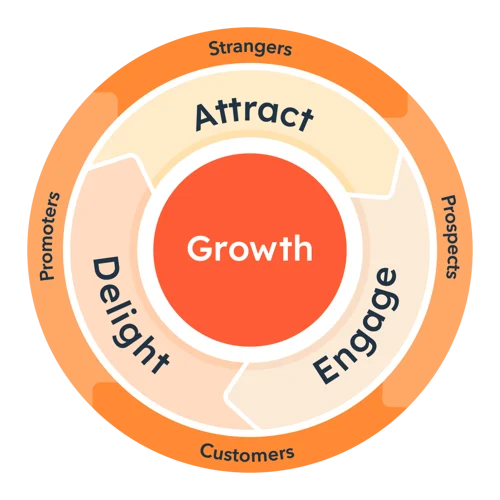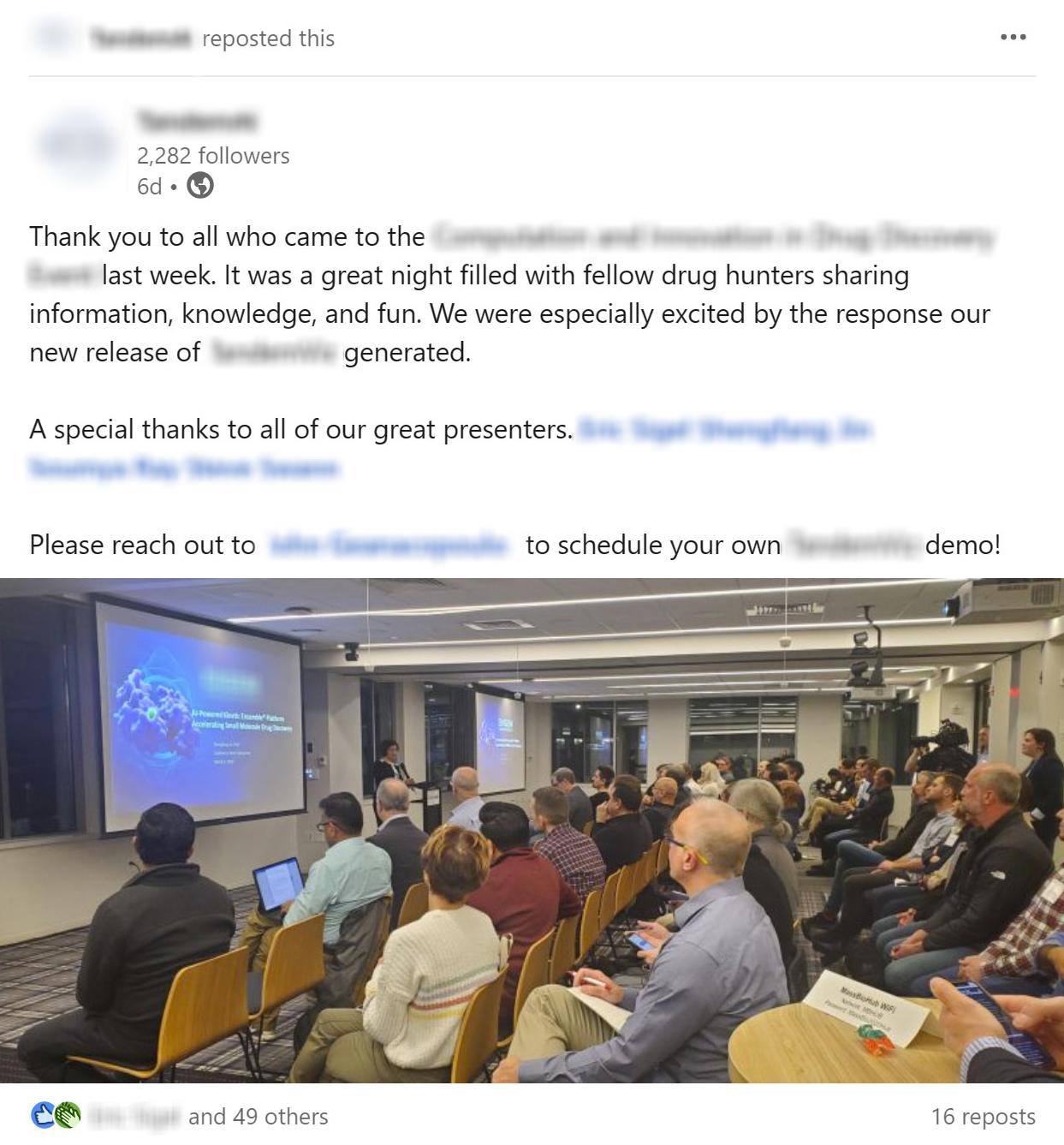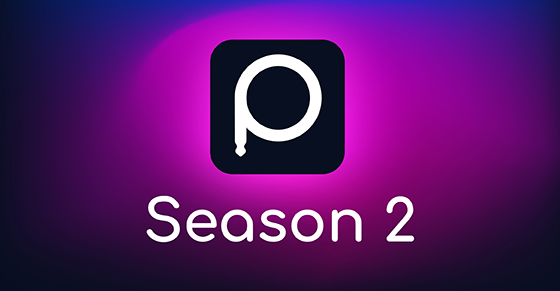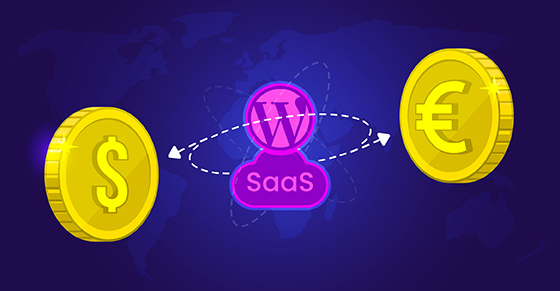|
|
Making software products is the fun part 🚀 Selling them is where things get tricky 📉
With numerous sales tools and technologies available, software creators need to find the right approach to effectively reach and engage their target audience (and turn their products into profit 💲).
There are two primary approaches that stand out: inbound sales and outbound sales.
Although they share a common goal, they’re different when it comes to planning and execution.
An inbound sale occurs when a potential customer reaches out to your business, shows interest, and converts. An outbound sale happens when you proactively reach out to potential customers who haven’t expressed interest yet and successfully convert them.
Simply put: An inbound sale happens when a customer comes to you, while an outbound sale is the result of you actively pursuing a prospect.
Understanding the distinction and relationship between inbound and outbound is crucial for creating an effective sales strategy to generate more business. Each approach has its advantages, but deciding which one to implement depends on several factors, such as:
- Your existing customer base
- The scale of your operation
- Available manpower
- Your marketing budget
- The size of your network
- Your expertise
While you as a software creator may not think you need a sales strategy, you’re likely already doing sales without even realizing it.
In this article, we explore the differences between inbound and outbound sales by unpacking the specifics of each approach. We’ll also discuss hybrid strategies that combine the best of both. By the end, you’ll be well-positioned to choose the strategy that suits your unique needs 😉

The Fundamentals of Inbound Sales
Inbound sales are about finding ways to appeal to your prospects’ interests and providing them with enough resources to help them make a decision. Simply put, this is a long game where you anticipate potential buyers’ needs from the early stages of their journey to the very last steps.
Inbound sales are especially beneficial for businesses that cater to audiences who actively use Google and other platforms to educate themselves about specific problems or products.
These audiences are actively seeking information and solutions that align with their needs and interests. In such cases, implementing inbound sales strategies can effectively engage and convert these informed and research-driven customers.
Potential customers will often research different products and brands before making a purchase.
By providing unique, educational content that leverages the insights/experiences of industry experts, software creators can stake their claim as authority figures in their niches to attract and entice potential customers who are looking for solutions.
Here’s how Freemius provides value to prospects and our makers community by creating content that aligns with their software product-making needs:
- Our blog has in-depth, value-driven articles that cover various aspects of launching and growing a software product business — from running beta programs to offering multi-currency support and pricing.
- As an example, our maker Florian Daugalies discovered Freemius while searching for ways to get more exposure for his plugins on the WordPress.org repository and found our article about outranking your competitors’ SEO on the WordPress.org plugin repository.
- Our YouTube channel covers hot topics in the software space. In The Gamechangers Series, we interview notable industry figures who engaged in successful mergers and acquisitions. Conversely, in our Spectacular Fails Series, we asked software business founders to share their biggest industry-related failures and what they learned from the process.
- The plugin.fm podcast features interviews with developers, marketers, entrepreneurs, and other influential figures — such as SEO leader Rand Fishkin and WordPress co-founder Matt Mullenweg — to help software creators launch and grow their businesses.
Let’s look at how inbound tactics are implemented.
How Software Companies Leverage Inbound Sales
Many software companies have leveraged inbound sales strategies to drive growth and even achieve market dominance.
HubSpot, for example, has built a thriving business around inbound marketing software by utilizing content marketing, SEO, and social media to position itself as an authority and attract and engage potential customers. In fact, the concept of inbound marketing itself was coined by HubSpot’s co-founder and CEO Brian Halligan in 2005.
HubSpot transitioned from the traditional marketing funnel model to the flywheel approach by recognizing the importance of customer retention and advocacy in driving sustainable growth. They shifted their focus from solely acquiring new customers to delivering exceptional experiences throughout the entire customer lifecycle.

By embracing the flywheel concept, the company prioritized building long-term relationships with customers, leading to increased satisfaction, loyalty, and — ultimately — business success.
But it’s not only industry giants who’ve prospered with inbound sales tactics. Debbie Moran, marketing manager of social media management platform RecurPost, says:
“By consistently creating valuable content that addresses the pain points and challenges of our target audience, we’ve been able to attract qualified leads and build trust within our industry. For example, we regularly publish blog posts, ebooks, and case studies that provide actionable tips and insights on social media management and automation.”

“We’ve also found success with search engine optimization (SEO) as part of our inbound marketing efforts. By optimizing our website and content for relevant keywords and phrases, we’ve been able to improve our visibility in SERPs and drive organic traffic to our site. This has resulted in a steady stream of inbound leads who are actively searching for solutions like RecurPost.”
Let’s move on to the other side of the sales and marketing coin:
The Fundamentals of Outbound Sales
Outbound sales actively pursue prospects and directly initiate conversations through channels like direct emails and cold calls. It’s effective for software businesses targeting specific industries or demographics, especially when there’s no demand for your product.
Outbound sales present value to prospects who don’t know about your product/service or how/why it can help them (yet 😉). It’s your job to state your case to them so they immediately see the value of what you’re offering and how it can move the needle for their business.
In other words: It helps you identify and directly reach out to prospects who may not be on the lookout for new solutions but could still benefit from them.
It’s important to note that outbound tends to be costly. Generating leads via outbound can be 61% more expensive than inbound, which raises questions about how effective this approach is for new and/or smaller businesses and solo software creators with budget constraints.
Even so, outbound sales tactics remain effective in the software market. They allow companies to leverage data-driven approaches to identify and prioritize prospects based on factors like demographics, industry, and pain points, and tailor their messaging accordingly.
Check out this article about the Outbound Sales Learning Curve to understand if outbound is a viable strategy for your software business in its current state.

Targeted outreach helps sales teams reach out to specific individuals or organizations that fit their ideal customer profile and focus their outbound efforts on high-potential leads to increase the likelihood of conversion.
An example of a SaaS company successfully implementing outbound sales tactics is the CRM platform Salesforce. The company utilizes a combination of email marketing, targeted advertising, and personalized outreach to connect with potential customers and drive sales, and ensures its message resonates with individual audience members through segmentation and personalization.
But outbound sales and marketing isn’t confined to cold emails, ads, and impersonal phone calls. It can also be F2F:
Outbound Sales and Networking
In the early days of starting a business, networking is an effective way to amplify your company and its products. By researching key players in targeted industries and niches, you can attend conferences and events to make connections or reach out on social media to introduce yourself and get the word out about your product(s).
While industry players won’t necessarily convert into paying customers, creating favorable impressions puts you and your products top-of-mind and boosts the chances of word-of-mouth promotion.
Businesses can even take the opportunity into their own hands by organizing outbound networking events.
Freemius hosts a community event at WordCamps called Makers’ Meetup where we facilitate a networking environment for software makers.
While the primary objective is to create networking opportunities for our makers so they can learn from like-minded product makers and get new ideas and inspiration, it’s also a valuable opportunity for us as a company to have insightful conversations and build relationships with people in the industry.
[To learn more about the art of networking, check out Talk the Talk: The Solopreneur’s Guide to Building a WordPress Network].
Inbound Sales vs Outbound Sales: The Key Differences
We’ve unpacked the high-level distinctions between inbound and outbound sales. But what are the more granular differences between the two — especially in terms of success rates and ROI?
And is one better than the other?
Inbound Sales Strengths and Weaknesses
Inbound sales typically yield consistent conversion rates, often reaching up to 12%. Additionally, businesses that employ inbound sales strategies benefit from lower acquisition costs. This is because potential customers are already engaged and genuinely interested in the company’s offerings.
However, winning over potential customers with inbound usually takes more time than with outbound. Not to mention the effort that goes into creating quality content and being active on social media.
Many software creators and founders will likely not have the time for ongoing content creation and outreach and will probably need to hire people to take care of that for them.
Outbound Sales Strengths and Weaknesses
Outbound sales can yield faster conversions, especially when coupled with automation techniques. Utilizing data and other analytics to drive outbound sales strategies can also provide more direct control over lead generation and prospecting efforts.
That said, outbound marketing can incur high upfront costs and produce less ROI than inbound sales. What’s more, this approach is undeniably more ‘in-your-face’ than inbound marketing, which means there’s a chance of rubbing leads the wrong way and negatively affecting their perception of your business.
Every software business/product maker’s needs are different and deciding which strategy to focus on — and how much time, resources, and money to invest — will boil down to their unique situation.
Let’s delve a little deeper into how to analyze results generated by both inbound and outbound marketing.
Measuring Success: Analyzing Metrics for Inbound and Outbound Sales
Measuring the outcomes of both inbound and outbound sales strategies requires focusing on key performance indicators (KPIs).
For inbound sales, essential KPIs include:
- Website Traffic: Monitoring organic traffic can help you gauge whether your marketing efforts are intriguing to potential customers.
- Lead Generation: Leads can be tracked via email marketing tools — like open tracking and click tracking on Mailchimp — as well as email signups on your website and social media and web analytics.
- Conversion Rate: Make sure you calculate the percentage of leads that convert into paying customers, as this is perhaps the strongest measure of how effective your inbound sales strategy is proving to be.
- Customer Acquisition Cost (CAC): Although inbound sales are generally more cost-effective, you should also calculate the cost associated with acquiring each new customer. This helps evaluate the efficiency and scalability of your inbound efforts.
For outbound sales:
- Outreach Volume: Monitoring the number of outbound sales emails, calls, and other outreach efforts provides insights into whether your sales and marketing efforts are paying off.
- Response Rate: Tracking how many leads respond to outreach efforts shows how effective your outbound messaging and targeting strategies are.
- Sales Cycle Length: The average time it takes for outbound leads to progress through the sales funnel helps identify areas for optimization and improvement.
- Opportunity Conversion Rate: Calculating the percentage of outbound opportunities that convert into closed deals is probably the best measure of how well your outbound efforts are performing.
How can you measure these KPIs?
- CRM (Customer Relationship Management) software such as Salesforce, HubSpot, and Zoho CRM allows businesses to track interactions with prospective customers, and analyze sales performance data.
- Marketing automation platforms like Marketo, Pardot, and Mailchimp enable companies to automate workflows, personalize messaging, and measure the impact of marketing campaigns.
- Advanced analytics tools and techniques like data visualization, cohort analysis, and A/B testing can provide deeper insights into sales performance and identify opportunities for optimization and improvement.
Speaking of advanced analytics tools: Freemius makers can leverage our powerful Sales and Audience Analytics Dashboard to analyze sales performance with KPIs like sales, refunds, and chargebacks.
These stats give our makers a snapshot of success using Freemius and help them iterate and improve their products and marketing efforts over time.
Find out more about the features we’ve included and how they can help you sell more software products.
So, to recap — we’ve covered the differences between inbound sales vs outbound sales and shown you how to track and measure success.
But the question remains: Should you mainly focus on inbound or outbound sales?
The answer: You don’t necessarily have to choose 😉 In fact, your best bet will likely be to buddy up with both of them and create a hybrid strategy.
Hybrid Sales Strategies and Best Practices
Many software companies have found success by embracing hybrid sales strategies that combine elements of both inbound and outbound sales approaches.
Have a look at the following real-world examples.
Combining Inbound Content with Outbound Outreach
Diana Zheng is the Head of Marketing for Stallion Express. She previously worked with a SaaS startup focused on project management software.
At the start of their inbound efforts, they focused on creating high-quality content tailored to project managers’ pain points: blog content, ebooks, webinars, etc. This generated consistent organic traffic and leads who were interested in enhancing their project management processes.
“…we combined our inbound approach with outbound strategies to expand our reach. We created email campaigns targeting decision-makers within companies that could use our solution. By using data-based targeting and A/B testing campaigns, we refined our outreach strategies, resulting in higher response and conversion rates.”
Diana’s team also combined their inbound content with their outbound outreach.
“For example, in our emails, we linked to relevant blog articles or case studies to provide value in the early stages and build trust. This hybrid strategy worked exceptionally well. We increased brand awareness, engagement, and conversions, maximized our reach, and drove real business outcomes for our SaaS startup.”
Diana’s experience emphasizes the potential — and importance — of a multi-faceted and holistic marketing strategy, where each supports the other to achieve best-in-class results.
Likewise, Strategic Marketing Consultant Hannah Lightner has also found that hybrid approaches usually work best.
Mixing Cold Outreach with LinkedIn Content
“Oftentimes, marketing is considered an inbound approach and sales is considered an outbound approach. This is quite a reductionist view of the sales funnel process, but it explains the terms well.”
Hannah implemented a hybrid approach for a small-molecule drug discovery client who was gearing up for a SaaS go-to-market (GTM) strategy.
“They kickstarted their marketing strategy with consistent LinkedIn content, a custom CRM solution through Hubspot, re-designed conference materials, hosted content on their website (ungated), and much more. We even designed a cold outreach nurture sequence that acted as a drip campaign and was about 80% automated through a highly technical Hubspot workflow.”
By boosting overall brand recognition and joining the conference circuit, the company was able to start backing up its LinkedIn content with familiar faces, thereby increasing its reputation and building customer loyalty.
Utilizing these combined strategies over 4-6 months even gained attention from their biggest competitor, who started closely following their LinkedIn posts and webinar events, and even engaged with website content.
“Though this company was an early-stage startup, they immediately found themselves closing leads quicker due to a combination of semi-automated cold outreach campaigns, personalized campaigns, and in-person conferences.”

Hybrid models are effective because they allow cross-pollination between inbound and outbound marketing, and many software creators would do well to design uniquely customized sales strategies like the ones above.
But how do you tailor a hybrid model to suit your software business’s specific needs? And should you lean more towards inbound or outbound sales? Consider the following:
The Decision-Making Process: Choosing the Ideal Strategy
Understand Your Target Audience
Start by gaining a deep understanding of your target market. Consider factors such as demographics, pain points, and buying behaviors to determine which sales approach is most likely to resonate with your audience.
Evaluate Product-Market Fit
Understand the needs of your target market, what product or service you’re offering, and why it’s useful. Does it solve a problem or address a pain point? Is there demand for your solution already or do you need to create demand for it?
Consider Scalability
Of your inbound/outbound strategies, that is. What is the potential reach? How many leads do you stand to generate by using one or the other? What are the resource and financial requirements, and do they align with your growth objectives?
Speaking of…
Assess Cost-Effectiveness
Consider factors like upfront investment, ongoing expenses, and potential ROI to determine which approach offers the best balance of cost-effectiveness and performance.
Prioritize Long-Term Sustainability
What is the long-term sustainability of your chosen sales strategy?
You need to consider factors like the ability to consistently generate leads and drive revenue growth, as well as the potential for adapting to changes in the market over time.
Test and Iterate
We’ve touched on this, but you must continuously monitor and evaluate your marketing strategy’s performance. Constant (and consistent) adaptation is the only surefire way to refine your marketing strategy.
Still unsure about where to focus your marketing efforts? Consider the following as a — literal 😉 — point of departure.
Subscribe and grab a free copy to start Mastering SEO on the WordPress.org Repository
Make the WordPress.org search algorithm work for you with actionable tips to rank your plugin higher.

Striking an Inbound and Outbound Balance for Success
Going in swinging with a combo of inbound and outbound sales and taking things from there is your best bet. Trust your gut, learn from the process, and watch as you carve a place in the market for your software business and offerings.
Just like we did…
Freemius is a SaaS company that’s relied on a variety of inbound and outbound sales techniques to educate, inspire, and attract software creators to our platform. From value-driven content creation across various channels to networking at industry events all over the world, we’ve tested the waters and learned a thing or two about making a splash in an ocean full of competitors.
But it’s not just about conversions for us — we’re committed to democratizing and sharing our knowledge with the greater software community. After all, a rising tide lifts all boats 😉
If you’d like to discuss how the inbound/outbound sales techniques that have worked for us can work for you, get in touch here or drop us a DM on X.








